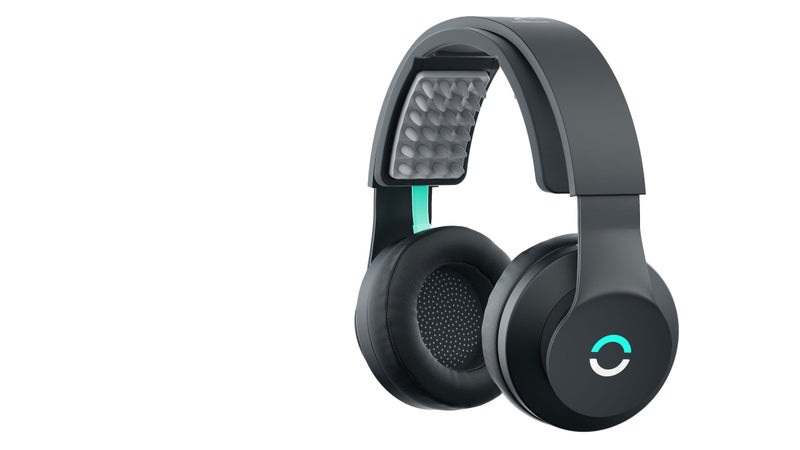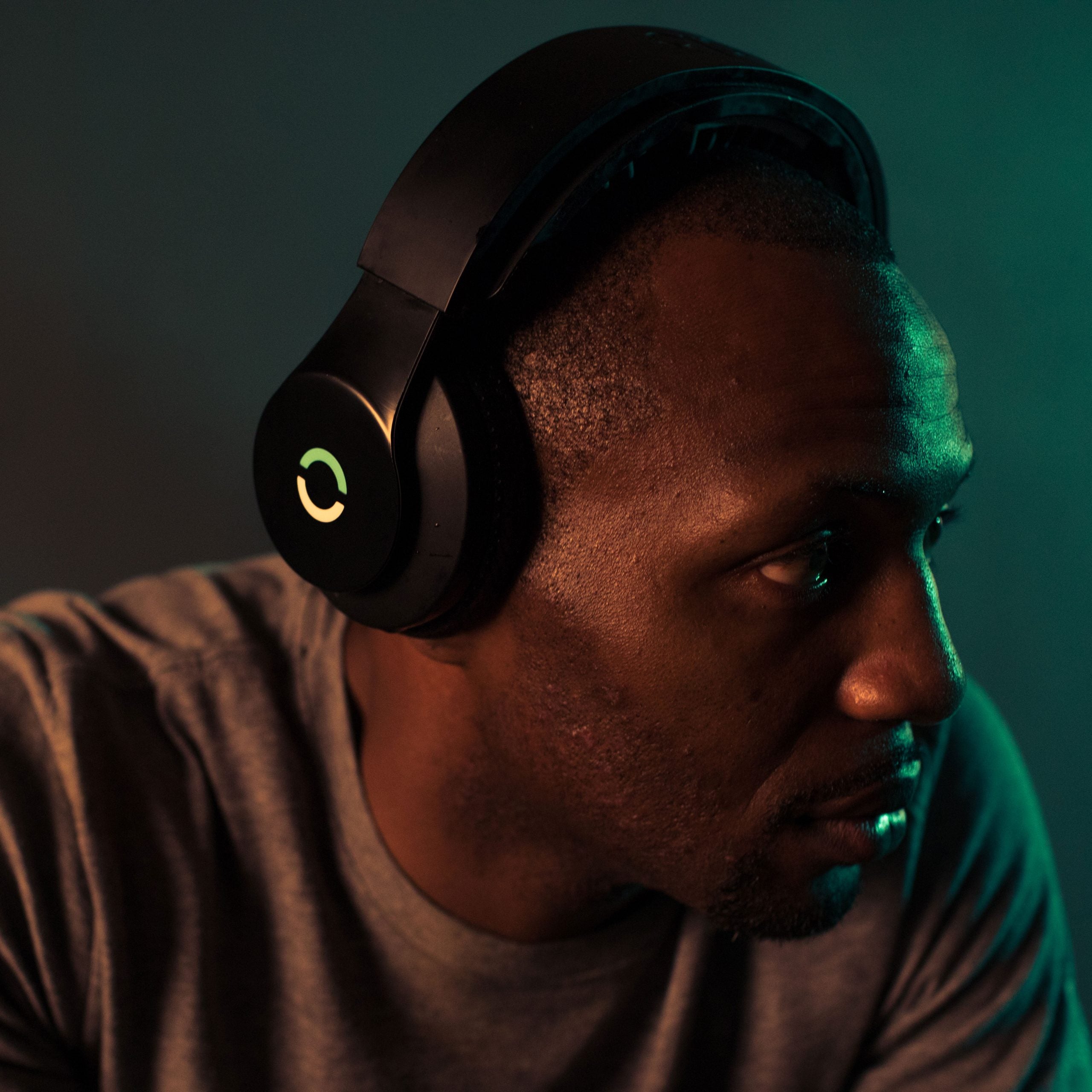WeÔÇÖve known for a while that the final frontier of sports performance is┬áthe mind. While athletes┬áhave been practicing different forms of meditation and visualization for years, a new device called , released this week, hopes┬áto bring mental training into the 21st century. The gadget, which looks like a pair of bulky Skullcandy headphones, transmits 1-2.2 milliamps of electricity via three electrodes in order to stimulate the brainÔÇÖs primary motor cortex, which controls movement.
The Halo Sport uses transcranial direct-current stimulation (tDCS), which has been used effectively in clinical settings to improve memory, learning, and intelligence and to treat depression, chronic pain, and schizophrenia. Halo calls its version of the tech neuropriming. The company is the first to offer it commercially to athletes.
According to Nick Davis, a senior lecturer in psychology at Manchester Metropolitan University who has┬á┬átDCS, most research on the topic has been conducted in a laboratory, on subjects who are given small tasks like quickly pressing a button on a computer. In these controlled settings, stimulating the brain via┬átDCS┬áhad quantifiable positive effects on the behavior and brain of those suffering from neurological problems like depression and ParkinsonÔÇÖs disease.┬áÔÇťWhat we don't know, however, is whether you get the same results in the sports field, where it's a much less controlled environment,ÔÇŁ says Davis.
Halo users are supposed to put the┬ádevice on for twenty minutes before training sessions. Doing so will ÔÇťput the brainÔÇÖs motor cortex in a temporary state of hyper learning that lasts for an hour,ÔÇŁ according to HaloÔÇÖs website. ÔÇťDuring this time, feeding your brain quality athletic training repetitions results in this information being more fully incorporated into your brain.ÔÇŁ
Transcranial direct-current stimulation has been used in clinical settings to improve memory, learning, and intelligence and to treat depression, chronic pain, and schizophrenia.
There's very little peer-reviewed research on the efficacy of tDCS for performance outside of a controlled lab. However, Halo has conducted in-house studies, and their results are intriguing: it found that CrossFit athletes who used their headphones for two weeks showed a five percent increase in lower body strength. And Halo does have an impressive roster: it was founded by neuroscientist Daniel Chao and engineer Brett Wingeier, who spent more than a decade designing an FDA-approved neurostimulation device for epilepsy patients. The device is now being used by Olympic track athletes, NFL players, and members of the U.S. Ski Team, all of whom have noted promising results. 
We wanted to test it for ourselves. The two of us used the headphonesÔÇöwhich pair with an iPhone app via BluetoothÔÇötwenty minutes before our midday lunch runs, two to three times a week.┬áWe were not testing these headphones by analyzing a specific metricÔÇöspeed, strength, time, etc.ÔÇöand instead were keeping an open mind, concentrating more on how it made us feel before, during, and after using them.┬á
The sensation of being zapped by a small amount of electricity, which is transmitted into your head through half-inch rubber fingers inside the headphones, left us with varying sensations: one felt nothing, the other said it seemed like he was being tickled underneath his skull. 
This is normal, says Wingeier. ÔÇťItÔÇÖs always interesting to hear about the way people perceive the stimulation,ÔÇŁ he says. ÔÇťEveryone seems to process the sensation differently. Some people donÔÇÖt think the device is on, others feel tingling on their scalp.ÔÇŁ

After the 20 minute session, we noticed varying effects: sometimes we were left with a headache that lasted as long as 30 minutes. Other times, we had a nervous energy, almost like we had just slammed two espressos. Other times we felt nothing. 
Just as caffeine can be a performance booster, our tester┬áwho felt energetic after using the Halo headphones unsurprisingly reported the same effect: more energy, more enthusiasm, and faster splitsÔÇöit shaved five minutes off a seven-mile run, to be specific.
The goal of Halo, however, is to improve athletic efficiency and performance over an extended period of timeÔÇönot just improve energy levels on a workout-by-workout basis.┬áÔÇťWhat happens when you turn on a brain stimulator like Halo is that an electric current passes across your head,ÔÇŁ says Davis. ÔÇťFor reasons we don't really understand, brain cells that are near the positive electrode become a bit more active, and when a brain area is more active, it tends to be more plastic. This is called neuroplasticity, and it relates to the ability to learn things; there is evidence that simple motor actions are learned more readily when they're done with positive stimulation.ÔÇŁ
Did we see any long term benefits after using the headphones? If we did, itÔÇÖs hard to say. We┬áused Halo during a period of intense training, where any number of other factorsÔÇödiet, sleep, endocrine imbalanceÔÇöcould have contributed to how we┬áfelt. In other words, we werenÔÇÖt able to perfectly control for the effects of tDCS, and itÔÇÖs likely that not many athletes who are using this product will.
The bottom line:┬áHalo is designed for top-tier athletes looking to squeeze that little bit extra from their potential. At $699, itÔÇÖs aimed at┬áelites,┬áthose with cash to burn, and┬áearly adopters┬áintrigued by the possibility of getting more from your mind, in addition to your muscles, before a workout. As for us, we'll continue to use them before our midday runs, looking for any long term┬áimprovement to our strength or speed. ║┌┴¤│ď╣¤═°┬ácan be a pretty competitive office environment, and we'll keep┬átraining our brains while everyone else is just focusing on mileage.┬á
ÔÇťWeÔÇÖve always felt it in our gut, I think,ÔÇŁ says Brett Wingeier. ÔÇťBut now everybody involved in serious athletic training is realizing how crucial the brain is for performance.ÔÇŁ



